Neck-deep in water, but thirsty like in a desert | Video
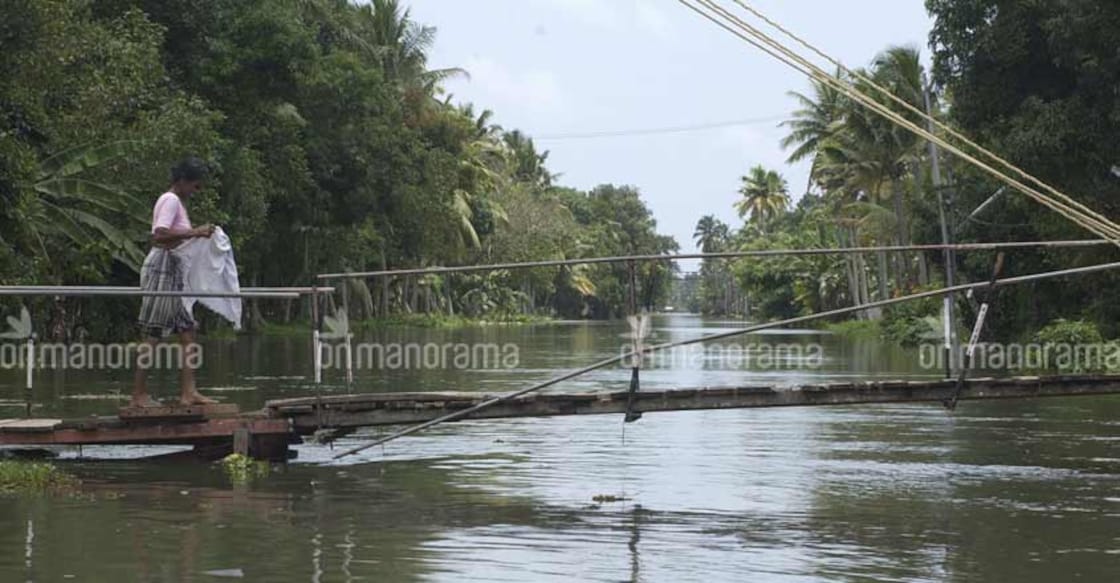
Mail This Article
Kerala is almost as wet as a tropical rainforest. It remains drenched half the year and receives three times the average national rainfall. There are water-logged pockets in the state, Kuttanad in particular. Here, pollution has devalued the resource so much that the scenic and vast expanses of water, extending endless on all sides, is actually of no use. In this sense, a water-filled Kuttanad is no different from the arid Jaisalmer desert, the country's driest place. The residents of both these places yearn for water. Onmanorama goes to the Venice of the East in the wake of the alarming crisis in major cities like Mumbai and Chennai staring at zero-water days in the near future. Reports say Cape Town, a major South African city, will be the first major urban centre to not have potable water.
Kuttanad: Standing on top of the narrow concrete Pulinkunnu bridge that straddles a canal, Josephine's house can be seen far away, a small lonely structure bang in the middle of a vast expanse of water. To reach the house from the bridge, one has to walk nearly three km along a soggy ridge, not more than three metre wide, that cuts through the water and separates the Pampa river and a paddy field (now, during the monsoon, a massive lotus pond). The house, a two-room concrete structure that looks wet and crumbling, is on the ridge, the lotus pond at its back and the Pampa flowing in front.
'Vinnaithandi Varuvaya' link
It is water everywhere but Josephine, a 52-year-old widow, sets out from her house everyday on her dinghy with a 50-litre can, and reaches Pulinkunnu mainland after rowing for nearly an hour. There she hails an autorickshaw that takes her to an RO (reverse osmosis) plant, or a water purification plant, some four km away, just beyond the iconic St Mary's Forane Church (the 'Vinnaithandi Varuvaya' Church for tourists). At the RO plant, she purchases 50 litres of potable water at 50 paise a litre. Josephine but is one of the luckier souls in Kuttanad. There are villages in Kuttanad, like Kainakary, Ramakary, Neelemperoor and Veliyanad, where villagers have to travel over 10 km to get hold of potable water.
Curse of plenitude
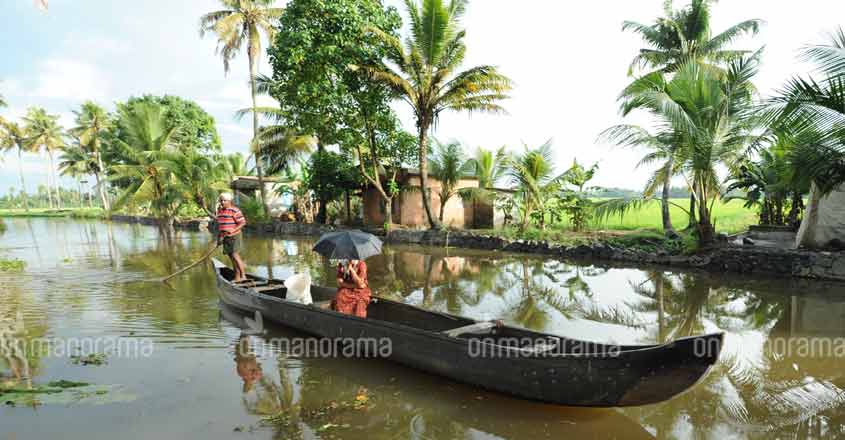
This looks like a curse straight out of some ancient fable. The place is smothered by water, “you open your eyes and there is water” is how Josephine puts it, but there is not a drop that can be safely consumed. At a time when even the most far-flung villages in the state, even parts of Alappuzha district, are getting water from sundry government-sponsored drinking water projects, no underground water pipes reach drinking water to working class houses in Kuttanadan villages.
Read more: Rs 1,000-crore drinking water project for Kuttanad
Four rivers
Kuttanad is fed by four major rivers - Meenachil, Pampa, Punnamada, and Achankovil, and yet 80 per cent of the people have no access to safe drinking water.
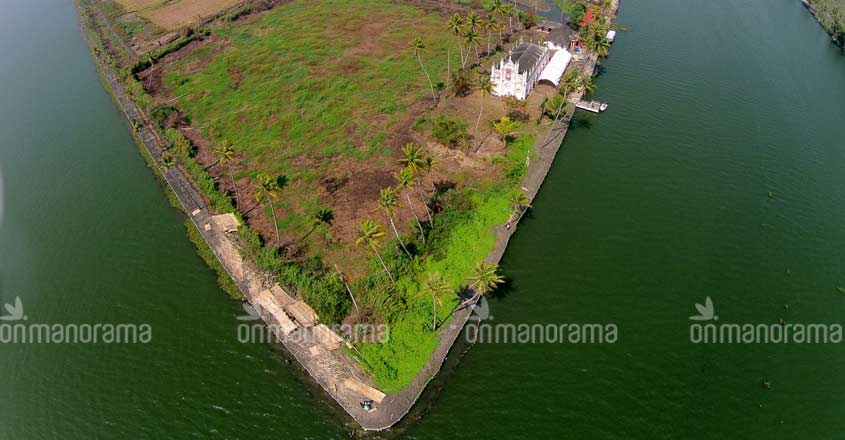
Their fate is so peculiar that it doesn't seem to evoke any sympathy either. “A wind-swept frail woman walking in search of water through fuming desert sands pricks the world's conscience. But a woman rowing a dinghy through a weed- and pesticide-infested narrow stream to collect drinking water from some source three or four km away prompts people to pick up their cameras. It is nothing more than an exotic way of life, touristy,” said Jacob Methila, a former professor and former ward member of Kavalam. But this woman on the boat is as desperate as the desert woman.
Oil-stained waters and blood-red wells
Josephine uses the surrounding water, turbid and oil-stained, to wash her clothes, cut her fish, and also to rear her ducks. But not to drink, or bathe or wash her utensils. “Her daughter, now doing her class XII, had consumed the water two years ago and suffered a serious case of dysentery; she was admitted for over a month to the Alappuzha medical college.
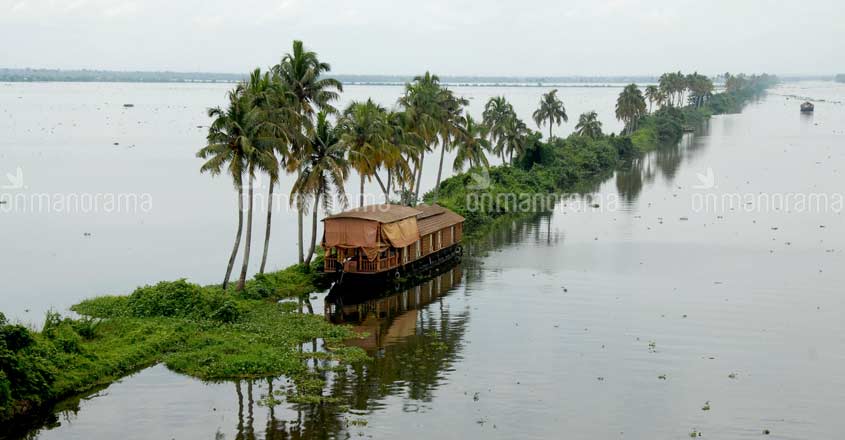
Kuttanad, the postcard face of Kerala
The water is heavy with microbial load, especially coliform bacteria from human excreta. Many studies, including by the Centre for Water Resources Development and Management (CWRDM), have confirmed this. “Then, the fertilizers and pesticides used for agriculture is flushed out into the streams and canals from the paddy fields,” Jacob Methila said. Making matters worse, the water found even in the wells is acidic and brackish. In fact, the water in most of the wells Onmanorama inspected had a brick-red colour, even though it had been raining for days; in certain wells it almost looked like blood. “Most houses in Kuttanad have wells but they are mostly used to dump waste,” said Rameshan, an autorickshaw driver.
One-room wonders
Thankfully, Kuttanad villagers have long before 'taken things into their hands.' The RO plant is the result of such an initiative. There are nearly 50 RO plants across Kuttanad, all of them installed with people's participation. Many are now dysfunctional due to lack of maintenance but the ones that have lasted have become the lifelines for harried villagers. Nearly 20 of the functional RO plants, including the one Josephine uses at Pulinkunnu, were set up using a participatory model put forward by Atree (Ashoka Trust for Research in Ecology and the Environment), the only NGO involved in the implementation of the Kuttanad Package.
Compact units

The RO plant takes up just a single room. The machinery involves a series of big and small filters. The water taken from the nearby pond or stream or river is made to pass through five stages of filtering, including an ultraviolet filtering unit, before the purified water is collected in a 2,000 or 5,000 litre tank inside the one-room plant. “We insisted that the panchayat provide the land and the building,” said Ashish George of Atree. Then, to make the RO plant sustainable, a 10-20 member committee was formed from among the user group. The running of the plant was left to them. The people themselves do the weekly cleaning and maintenance,” Ashish said.
Training programmes
Atree had conducted intense training programmes when the plant was first set up in 2014. Initially, considering the cost of maintenance and power, it was felt that the committees should distribute water for at least Re 1 a litre. But many now provide drinking water to their users at half the price, and still have managed enough saving to do the necessary maintenance. The Pulinkunnu RO plant, for instance, has scaled up capacity from 250 to 500 litres an hour with their savings alone. An RO plant is now the only source of drinking water in Kuttanad. Of course, during rains, people collect rainwater in tanks provided by panchayats and use it for drinking. There are also those, especially the moneyed class, who get their roof-top tanks filled by tankers from Changanassery.
Read more: In Kuttanad, this underwater wall 'kills' fish
Lure of the impure
RO plants but serve just a fraction of Kuttanad. Villagers left out have put in place other desperate measures. A group of youngsters in SN Kavala, for instance, have constructed a water tank on their own. They have laid an underground pipe that will draw water from the nearby river to feed their 10,000 litre tank mounted atop a steel frame, some 60 foot high. The tank feeds nearly 300 families around S N Kavala. Underground pipes were also laid to distribute water to the houses. However, each beneficiary house will have to lay their own underground pipe to take water from the main pipe to their water tanks. “We pooled Rs 10,000 from each family to construct the tank and the main pipeline,” said Jameskutty, one of the drivers of the project. Jameskutty works in a bakery in Pathanamthitta. They also collect an annual charge of Rs 400 from each of the users as electricity charges. The water tank, which runs automatically, has been constructed on the premises of Ratheesh, a painter.
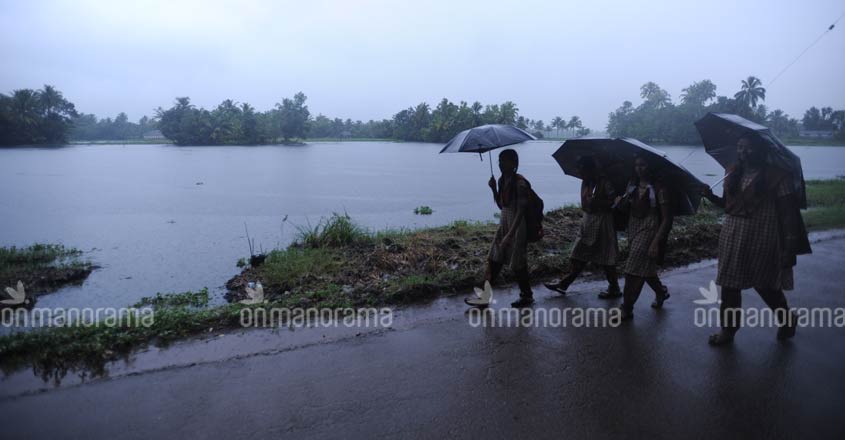
'Impure water'
They ambitiously call their initiative 'Chithrasala Drinking Water Project' but they are the first to admit that the water is not fit for drinking. “The water is taken straight from the river without any purification process. It is mainly for other purposes like washing. But some families just boil the water and use it for drinking though we have strictly warned them against it,” Ratheesh said. (The area of the Pampa from where Jameskutty and Ratheesh draw water is relatively unsullied. Further downstream, where many other groups have immersed their pumps, the water is badly polluted by the houseboats.)
In certain areas, to solve the issue of impure water, there is a combination of both. At Ward 9 in Kavalam, for instance, there is a tall tank, the ground floor of which is the RO plant (installed with Atree's guidance) and at the top is the 10,000-litre water tank holding un-treated water from the nearby river.
Dirty, too fast
A narrow stream, weed-infested and stagnant, can be found at the backyard of Ratheesh's house, passing near the Chithrasala tank. “Just five years ago, we had the entire neighbourhood sourcing water from this stream and now we don't dare drop our feet in it,” he said.
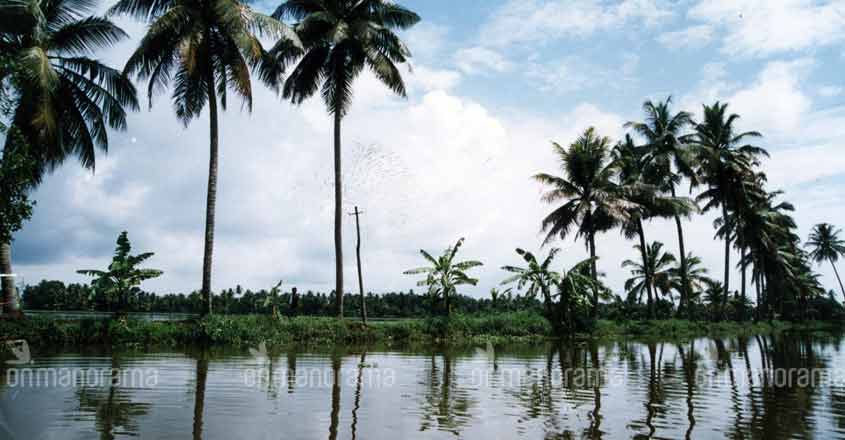
Rainfall data
Kerala receives an average annual rainfall of 3,107 mm, nearly three times the all-India average of 1,197 mm.
Of the total, the state gets 2,520 mm from the two monsoons alone (southwest – 2040 mm, and northeast – 480 mm).
Parts of Kerala's lowlands may average only 1,250 mm annually while the cool mountainous eastern highlands of Idukki district – comprising Kerala's wettest region – receive in excess of 5,000 mm of rain annually. Kerala, on an average, has 120-140 rainy days per year.
All these have not but alleviated Kuttanad's problems. Now, potable water is what comes through the many RO plants set up by people's collectives and the precious collection which people do of rainwater.



